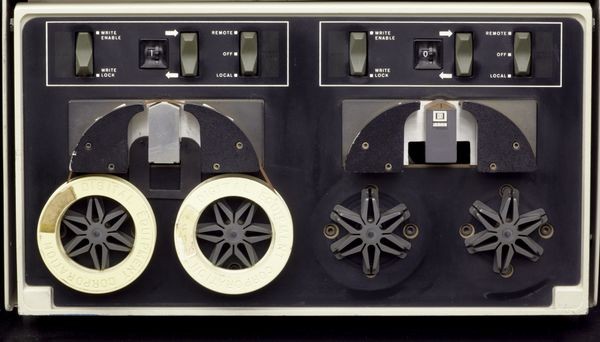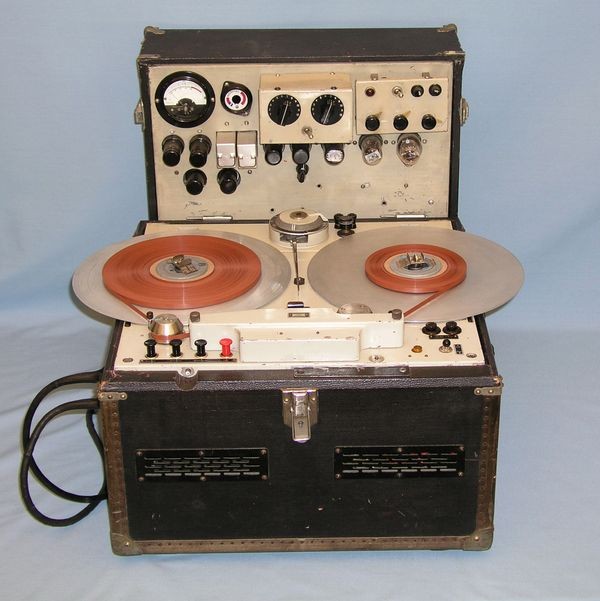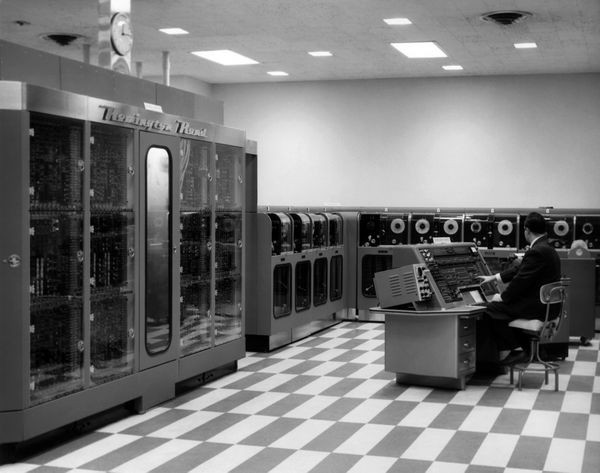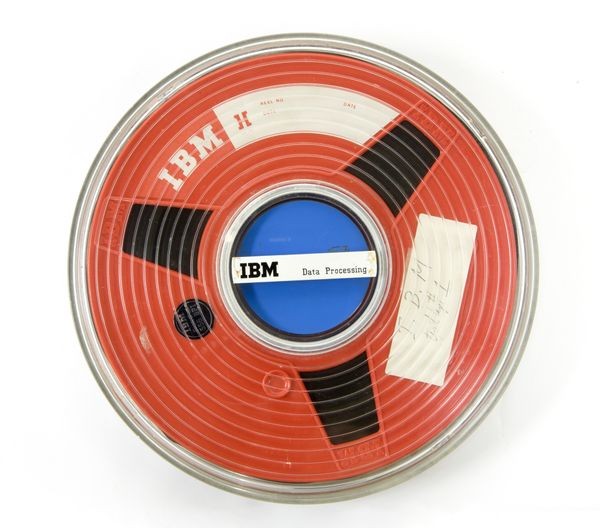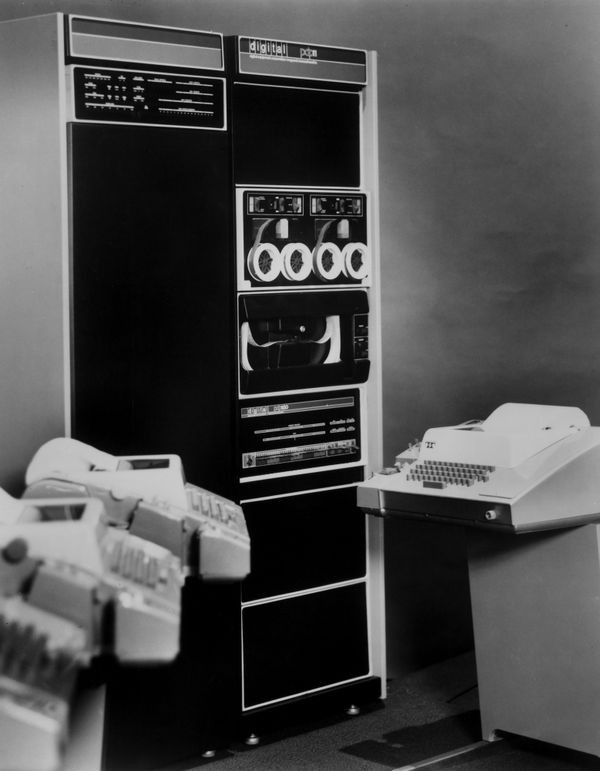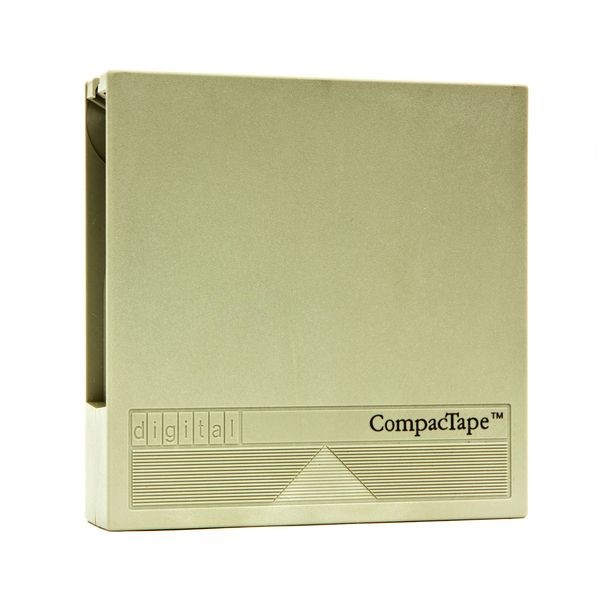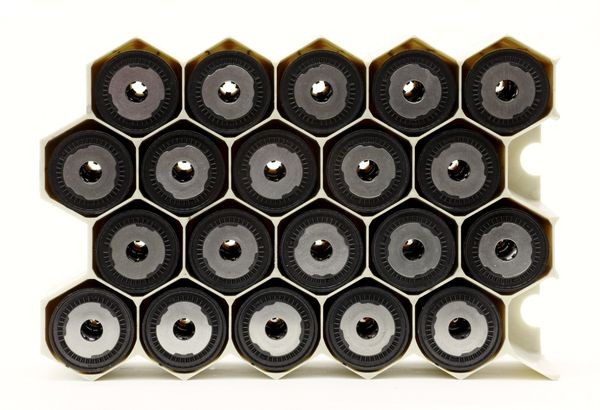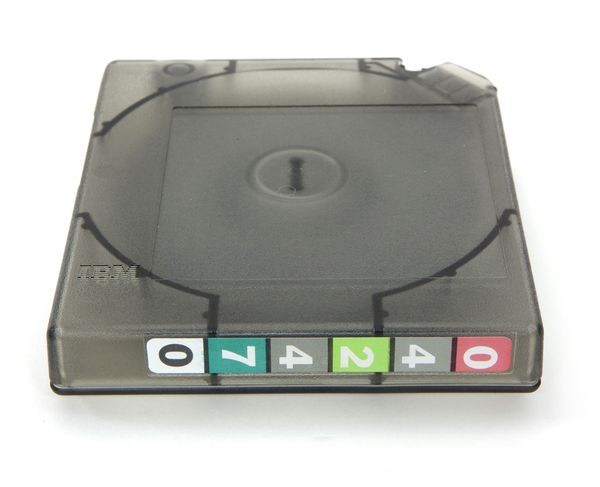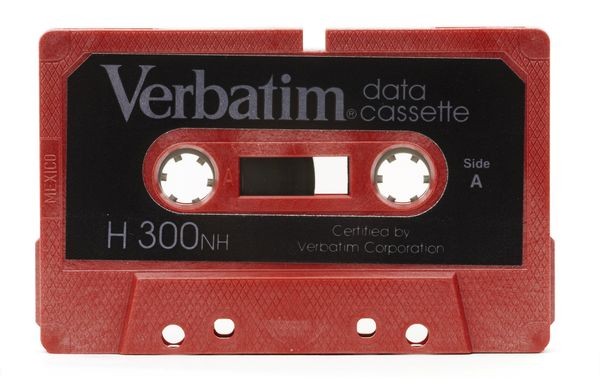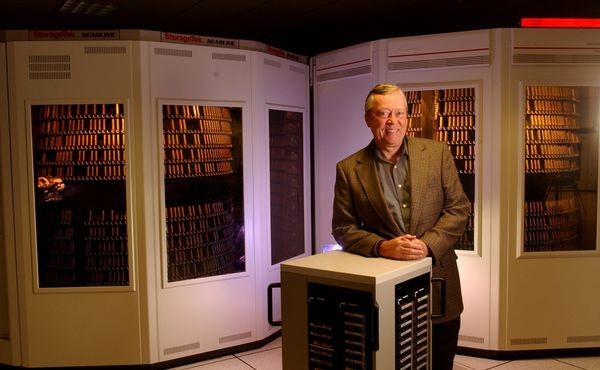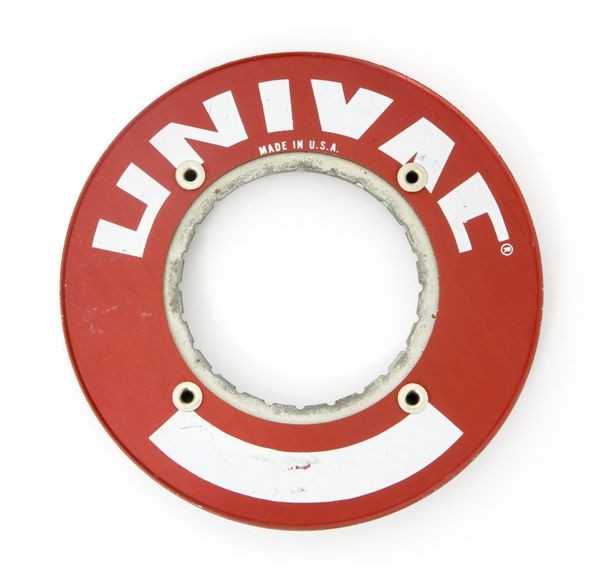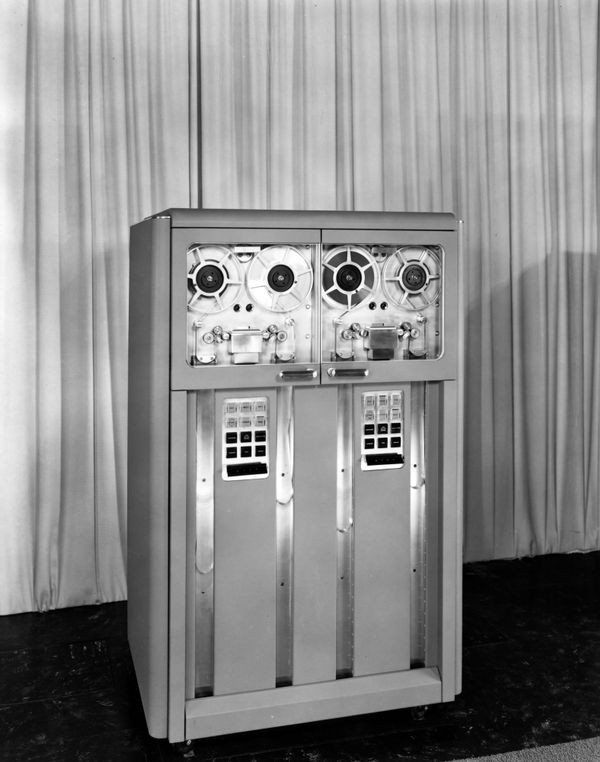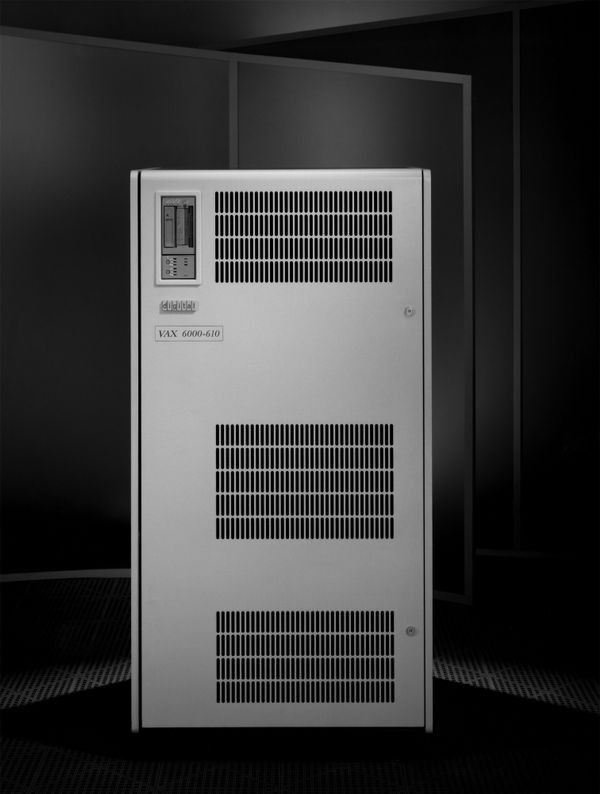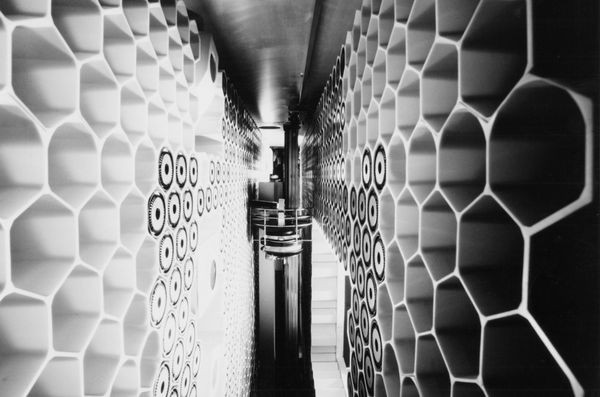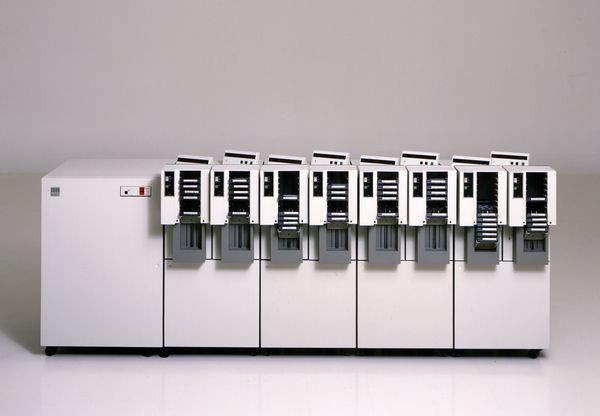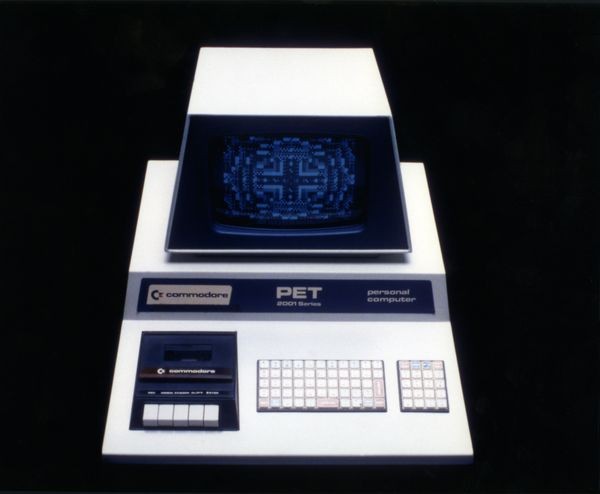Magnetic Tape
TU56 DECTape magnetic tape drive
DECtape used double recording to reduce the error rate. It was said that tape perforated with a hole punch would still work.
Magnetic Tape
Magnetic tape began as a medium for audio recordings in the 1930s. In 1951—six years before the first magnetic disks—UNIVAC introduced tape drives for computers.
Tape was a storage mainstay for many years and still survives, thanks to its low cost, portability, unlimited offline capacity, and standardized formats that make tapes interchangeable.
Magnetophon tape recorder
The German Magnetophon was used mostly by radio stations, but also for military communications. Its factory was heavily bombed during World War II.
View Artifact DetailUNIVAC I System
UNIVAC I used mercury delay lines for main memory and magnetic tape for storage. The tape drives, called “Uniservos,” are shown at the back.
View Artifact DetailTape reel (160 MB)
IBM established a standard for 10 1/2 inch tape reels that lasted over 25 years. Over time the recording density and hence the capacity of the tape increased by many times.
View Artifact DetailDECtape drive on PDP-11
Introduced in 1963, reliable and inexpensive DECtape was used in many generations of DEC minicomputers.
View Artifact DetailDEC CompacTape cartridge
Later standardized as Digital Linear Tape, this replaced the aging 1960s-era DECtape. DLT evolved dramatically, from 92 MB in 1984 to 800 GB with the 2006 "SuperDLT" format.
View Artifact DetailIBM 3850 Mass Storage System: honeycomb section with tapes (50 MB)
As an alternative to a manual tape reel library, IBM introduced this system with 4 inch long cylinders of magnetic tape that were retrieved and replaced by a robotic arm.
View Artifact DetailIBM 3480 tape cartridge (200 MB)
This magnetic tape cartridge was fast, reliable, durable and inexpensive. Introduced in 1984 and first used on mainframe computers, it replaced the standard 10.5" circular reel of magnetic tape that had been a feature of large computer systems since the 1950s.
View Artifact DetailData cassette (1.2MB)
Audio cassettes were used to store data or programs. They were small and inexpensive, but also slow and often unreliable.
View Artifact DetailPatrick Martin and StorageTek's PowderHorn tape library
StorageTek's PowderHorn automated tape library could store and retrieve immense amounts of data: each tape “silo” could store up to 1,200 terabytes of data.
View Artifact DetailUNIVAC metal tape reel
Surprisingly heavy, these 1200 foot reels of ½ inch metal tape were used on the UNIVAC I computer’s “Uniservo” tape drive, the first tape storage device for computers. Each metal tape held about 3MB.
View Artifact DetailIBM 726 magnetic tape drive
The IBM 726 introduced inexpensive coated plastic tape for data storage. Clever vacuum column tape buffers allowed the tape to start and stop quickly.
View Artifact DetailDEC VAX with Digital Linear Tape (DLT) drive
Designed originally by DEC, DLT technology was purchased by Quantum in 1994. The drive wrote 22 data tracks back and forth on ½” wide tape.
View Artifact DetailIBM 3850 mass storage system
The largest 3850 storage system held 4,720 cartridges, stored 236 GB, and was 20 feet long.
View Artifact DetailIBM 3480 magnetic tape subsystem
This drive read and wrote 18 tracks of data simultaneously on ½” tape. Each cartridge held 200 MB.
View Artifact DetailCommodore PET
The PET’s built-in cassette tape drive made it the standard way to load programs.
View Artifact Detail